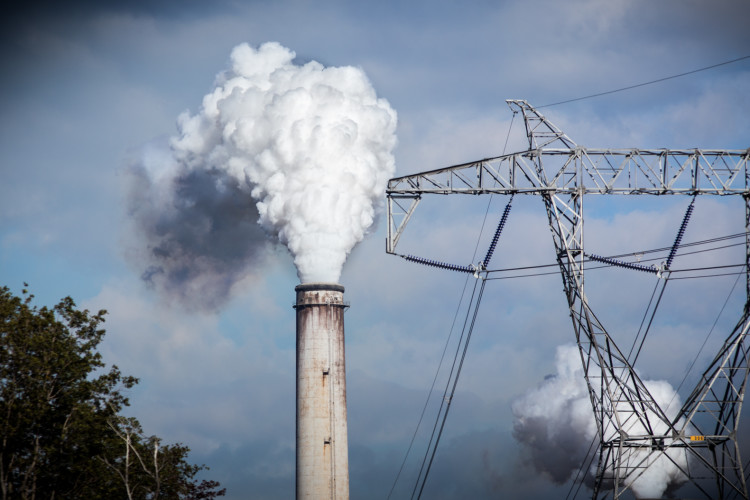We have much more to do and your continued support is needed now more than ever.
Effects of an Historic Climate Agreement
Hope and Challenges for Wildlife

The threat to such things I hold dear turns my attention to the world stage. An historic agreement to address global climate change has been ratified by enough nations to go into effect on November 4. This agreement was worked out when nations came together in Paris last December for the twenty-first conference of parties (COP) of the United Nations Framework Convention on Climate Change. As nations prepare to meet again in Marrakesh next month for the twenty-second COP, the approval of the Paris agreement illuminates the hope and challenges before us.

The Paris Agreement
Rapid climate change, if left unchecked, will make northern New England inhospitable for the maples largely responsible for its autumn splendor (as well as Vermont’s famed maple syrup). It will also likely extirpate iconic wildlife like moose from the region. Climate change poses similar threats to wildlife and communities across the globe.
Last December, over 190 nations agreed in Paris that actions should be taken to limit the amount of warming to 2 degrees Celsius compared to pre-industrial levels. Since scientists deem this to be the upper range of warming that the atmosphere can likely endure without triggering catastrophic consequences, nations agreed to aspire for a safer level of warming – 1.5 degrees Celsius.
In a victory for our planet, the agreement was triggered to go into effect last week when it was finally adopted by countries representing 55% of the world’s emissions (the U.S., India, China, Canada and most EU nations have adopted it). The agreement asks nations to come up with plans to meet that goal and implement those plans.
The good news is that these plans will dramatically reduce emissions. The bad news is that they currently fall short of the 2 degree goal, and even further still from the 1.5 degree aspiration.
U.S. Progress So Far

As the world’s second largest emitter of carbon pollution, the United States’s action is critical to success. The U.S. has taken many positive steps to reduce emissions and aim towards its near term goal of 26-28% carbon pollution emissions reductions by 2025.
For instance, the U.S Environmental Protection Agency finalized the Clean Power Plan – the nation’s first ever federal limits on carbon emissions from power plants (though these have been held up in court, a favorable outcome upholding the rule is expected). It has also placed limits on new and modified sources of methane pollution and taken steps to cover existing facilities. Additionally, the U.S. Department of Interior put in place a halt on new leasing of federal coal, a major source of U.S. emissions. Meanwhile, in large part due to bi-partisan supported tax credits, wind and solar power have taken off and become economically viable and competitive alternatives to fossil fuels, which are losing market share.
Certain administrative measures – like regulating existing sources of methane from the oil and gas sector – can further reduce emissions. Yet, regulatory action alone is unlikely to reach our 2025 reduction goals, much less the longer term goal of 80-90% emissions reductions that we need to avert catastrophic warming. More action by the United States is needed.
World Progress Towards a Climate Solution
Meanwhile, countries across the globe have promised and are taking tough and aggressive measures to reduce their emissions. For example:
- On October 4, Canada announced its plan to have a federal price on carbon by 2018, and it ratified the Paris Agreement the next day.
- China announced its ratification of the Paris Agreement jointly with the U.S. on September 3, effectively starting the cascade of ratifications that has led to speedy entry into force. China plans to have a carbon trading system in place by 2017, is on pace to have over 15% of its energy come from non-fossil fuel generation by 2020, and will increase its forest stock by 1.4 billion cubic meters over the next 5 years.
- India ratified the Paris Agreement on October 2 and has plans to make the country a world-leader in renewable energy by installing 100 gigawatts (GW) of solar power by 2022 (one GW is slightly less than the energy generated by two coal plants). For comparison, in 2014 there was about 181 GW of solar power installed worldwide. India has also committed to a massive investment in forest restoration to store carbon.
- Brazil, which ratified Paris on September 12, reduced climate emissions more than any other country on earth, cutting Amazon deforestation by 80% from 2004-2013.
- Mexico, which has already generated billions of dollars from its carbon tax, will start piloting its carbon pricing program next month and has plans to launch a national carbon market in 2018. Mexico ratified the Paris Agreement on September 21.

The incredible momentum in Paris has continued, with new major agreements being reached to reduce warming pollutants. Just recently, major international deals to curtail carbon pollution from the aviation sector, and cut the use of super-warming hydroflourocarbons used in refrigerators and air conditions have been reached.
The Path Ahead: A Price on Carbon
As we head towards Marrakesh, it is clear that the curve to avert dangerous warming is a steep one. But, it will lead to huge opportunities for the new industries of clean energy. To ensure American wildlife and communities are best protected, and to ensure advantages for domestic businesses and workers, the U.S. needs to lead the way in crafting solutions to climate change. This almost certainly means that a sector wide price on carbon must be passed by Congress – and soon. The need to put a price on carbon has been recognized worldwide as nearly 90 countries (representing 61% of global emissions) have included such a measure in their plans for carbon reduction under the Paris agreement.
In order to pass such a measure in time, we need a broad based effort to bring all parties and stakeholders together. Leadership to make that happen needs to start at the beginning of the next Administration and the next Congress. As the leaves fall, we should be reminded there is no time to waste.
Take ActionRemind Congress that addressing climate change is a priority for wildlife






















